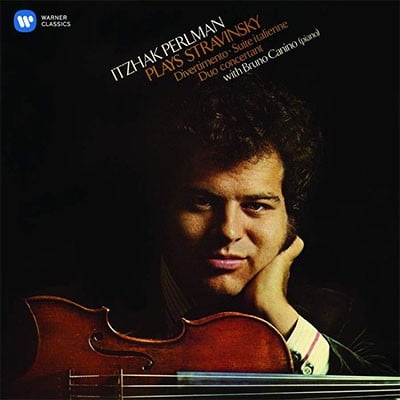Boosey & Hawkes
Stravinsky: "For many years I had taken no pleasure in the blend of strings struck in the piano with strings set in vibration with the bow. In order to reconcile myself to this instrumental combination I was compelled to turn to the minimum of instruments, that is to say, only two, in which I saw the possibility of solving the instrumental and acoustic problem." The Duo concertant music strives for a "lyricism with rules" in the spirit of "the pastoral poets of antiquity and their scholarly art and technique." The five movements range from an extensive Jig, all racing triplets, to the grave concluding Dithyrambe, in which a soaring violin cantilena is grounded by piano chords spanning four octaves and more.
Repertoire note by Joseph Horowitz
The Duo concertant was written for Stravinsky to play on tour with violinist Samuel Dushkin. It represented for Stravinsky a working out of what he saw as the ‘problem’ of two very different kinds of string instruments (violin and piano) working together. Its inspiration comes in part from Greek lyrical poetry, whose forms (eclogue, two dithyrambs) as well as a cantilena and a gigue give the five movements their titles and their characters. It would make an effective programme companion to, for example, the sonatas for violin and piano of Debussy and Bartók.
Repertoire note by Jonathan Cross

Itzhak Perlman/Bruno Canino
Warner Classics 2564613024

